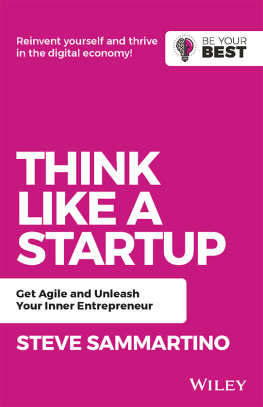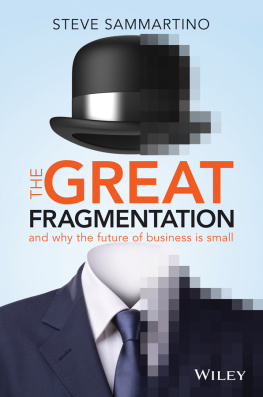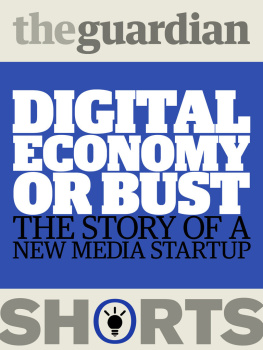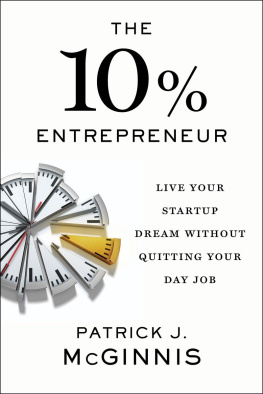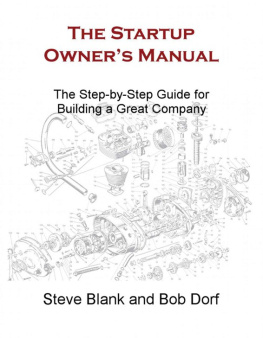Go to www.wiley.com/go/eula to access Wileys ebook EULA.
All rights reserved. Except as permitted under the Australian Copyright Act 1968 (for example, a fair dealing for the purposes of study, research, criticism or review), no part of this book may be reproduced, stored in a retrieval system, communicated or transmitted in any form or by any means without prior written permission. All inquiries should be made to the publisher at the address above.
Printed in Singapore by C.O.S. Printers Pte Ltd
The material in this publication is of the nature of general comment only, and does not represent professional advice. It is not intended to provide specific guidance for particular circumstances and it should not be relied on as the basis for any decision to take action or not take action on any matter which it covers. Readers should obtain professional advice where appropriate, before making any such decision. To the maximum extent permitted by law, the author and publisher disclaim all responsibility and liability to any person, arising directly or indirectly from any person taking or not taking action based on the information in this publication.
Preface
The first job I ever had was in a factory. I was pretty excited about it at the time. The job would leave a permanent imprint on my life. There was something about it Ive never forgotten; it changed me in a way. Maybe it was to do with all those routines, procedures and outputs, or maybe it was the way people behaved inside this closed system. In hindsight it all seemed a little strange, unnatural, even a little inhuman, but I didnt really question it when I was starting outI just took it as the way things were.
Factories are without doubt among the most interesting kinds of workplace humans have created. Most of us have at some point had the opportunity to at least visit one and see it in action from close up. Maybe you were sent to the factory of a company you worked with, so you could get an understanding of how things were done there. Maybe youve partaken in a bit of industrial tourismaviation and chocolate factories are favourites. If you havent had such an experience, let me recall my factory job for you.
Most people would arrive for their shift at the last moment. Clad in uniform with the company logo emblazoned on it, we streamed through the factory gate, which was set into an eight-foot-high chain-link fenceIm still not sure if it was designed to keep outsiders out or insiders in. The plant was broken up into sections, clearly delineated by yellow lines so everyone knew where to go and how to get there. More experienced workers took on more advanced tasks on the factory floor.
Right on 8.50 am a loud electronic bell heralded the start of the shift. In the next 10 minutes wed all file inside to our workstations. Once the head count had been taken we would be allocated our tasks for the day. The work week, month and year were planned by management, our work clearly set out for us in advance.
Some of the day-to-day procedures took me a while to get used to. I had to work independently in semi-isolation yet in a large, crowded room. We had to memorise certain tasks and calculations, which was important so each of us maximised our output and the whole system worked efficiently. Conversation was generally discouraged, as was helping others on the shift, which we were told would end up slowing down two people instead of one. When we got stuck or needed help with a task, the shift manager was to be informed. But we soon understood it was important not to make mistakes, because it slowed down everyone on the production line.
To remind us of the policies (there were quite a few to remember), the walls were festooned with notices covering how-to instructions, work-based targets, efficiency measures and reminders of what was required for success. Also displayed were photographs of star workers who had been recognised for performing above expectation on particular measures. And in every room a clock hung front and centre so we could all keep abreast of the time and meet our deadlines, completing specified outputs before each break. While many of the tasks were boring and repetitive, we were reminded of the benefits of doing things well and in a timely fashion. In fact, everything seemed to be about time.
Management generally had a vantage point from which they could observe and assess the workers progress. Theyd walk the floor looking over our shoulders to ensure everything was humming along efficiently and we would meet the production targets set for the day.
I was told little about what was going on outside my section of the factory, but was encouraged simply to focus on the job in front of me and doing it well. So long as I displayed a basic amount of competence, I could expect to be promoted to a higher position, like most of those who came before me, a position where the work was more demanding yet also more rewarding. No one got promoted if their performance review wasnt up to scratch, so it was vital that I master and memorise by rote the more rudimentary procedures. Quarterly interim performance audits, and an annual review at years end, determined our rate of advancement both at the plant and, eventually, to something bigger and better beyond it. The performance reviews noted the areas of improvement required by each individual. Doing well in one area and neglecting another wasnt good enough; management demanded that workers both followed procedures effectively and were well rounded.
Obedience mattered too. Suggesting a better way to do something, or questioning why we did certain things, was totally frowned on. I found it annoying that sometimes the most rewarded workers werent the best, but rather the best behaved. Sometimes it felt like following rules and wearing the right uniform were considered more important than the work itself, and the managers always had their favourites.
To be honest, I didnt like this job very much, but while I sensed the lack of freedom and humanity from day one, I somehow stuck it out for the next 13 years. If youre wondering why, its because I didnt have much choice. I started this job when I was five years old, and my employer was the public schooling system.
While all the tasks and expectations were made exceptionally clear at this factory, there was one important thing I didnt realise until much laterthe product I was making was myself. I was a raw material being processed into something that could be sold in the marketplace. The factory of school was teaching me to be a successful participant in the industrial economy. I was being prepared to be marketed to the industrialists who owned and controlled the factors of production. They would eventually take on a form of quasi-ownership of this human resource, otherwise known as Steve Sammartino. Perhaps they owned you toomaybe they still do?

